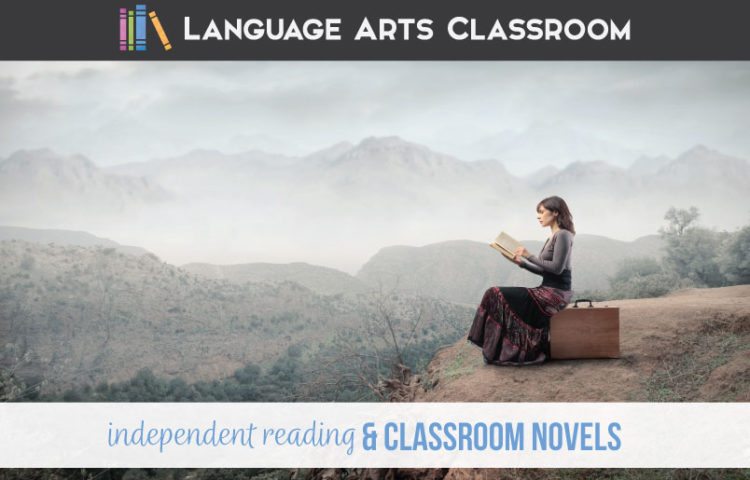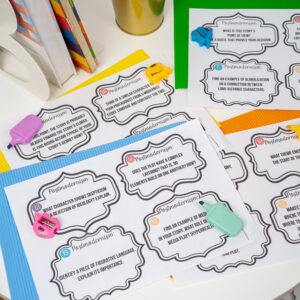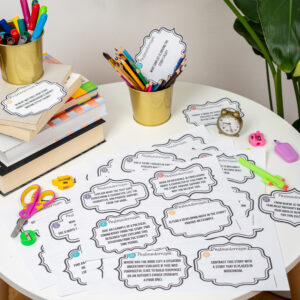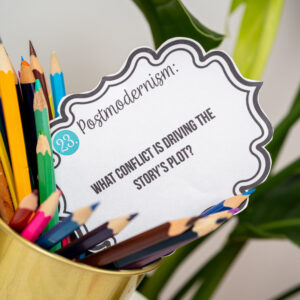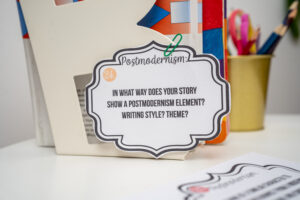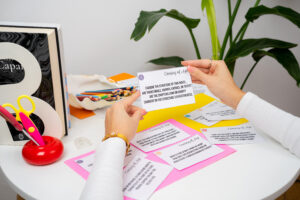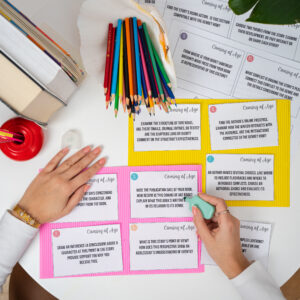Teachers are currently experimenting with independent reading and class novels for high schoolers.
I do both.
Research changes and evolves with all components of education. During current professional development, I listen to presenters expound the benefits of literacy in numerous ways. As I write this post, most educators lean toward independent reading where students choose their own books.
Overall, I find value in both independent reading as well as classroom novels. A classroom library encourages independent reading in high school. Plus, I encourage students to read informational texts, graphic novels, every genre.
Students should experience the thrill of choosing a book and falling in love. They should also experience collaboration and rich discussion in a group. (Teachers can always vary skills with independent reading activities for high school. Check out my free download.)
Some teenagers might not experience the modeling of analysis, of an adult enjoying a book. With literature, I find that my students and I need balance—both independent reading and class novels.
What is the importance of independent reading and class novels?
Young readers should experience a variety of literature in a variety of ways. Class novels provide opportunities for close reading, class discussions, and building comprehension and reading stamina. Benefits of independent reading include those as well as personalized reading experiences.
Independent reading.
To me, independent reading is a student choosing a book and reading that book. Sure, I might suggest books to students based on my relationship with them, but ultimately, the book chosen depends on what the reader finds interesting. I absolutely encourage students to read graphic novels, comic books, magazines, coffee table books, and on. Luckily, independent reading activities (high school) are plentiful.
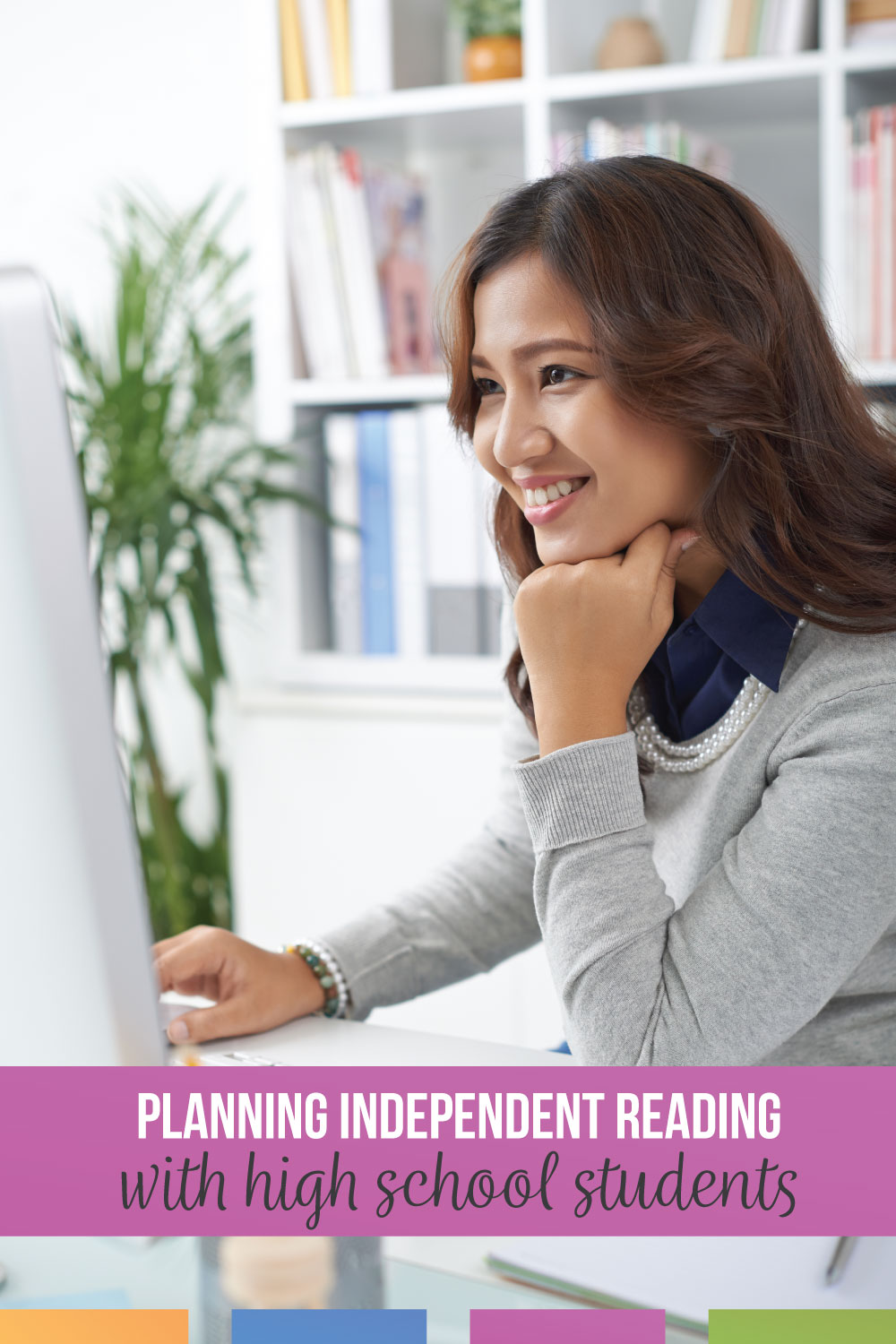
As students read, I conference with them. I don’t have a checklist and set of questions. We talk about the book because I am genuinely interested in what they read. I want students to see me as a reader, as someone who values their opinions and their “take” on the book.
Independent reading activities for high school.
If you are looking for a few concepts to cover, normally, we discuss a few of these questions:
- What made you pick up this book? Was it the cover? Now that you’ve read part of it, was the cover an honest representation of the contents?
- Tell me about the author. Is the writing style interesting? Is it a different sort of sentence structure and vocabulary than you are accustomed? Would you read this author again? Should I buy more books by this author?
- Have you ever read this “type” of book before (genre)? What books relate to this genre—is it a bit of a mystery and a bit of a psychological thriller? (I’m always interested in how students classify books compared to how I sort them.)
- Would you consider this a complex text? Why? As a person who has spent years in school, would you use this book for book choices in an ELA classroom?
And on. If a student raves about a book, I write down the title and author so I can read the book recommendations. I treat students as readers whose opinions I value, because I truly do.
When students do lit circles, I provide choices in how they show their understanding for me. Some students might draw scenes or create notes from certain chapters. Others might create infographics. When I provide choice for students to show their understanding, I get better results than if I only ask for a standard book report.
To make choice manageable, I ask students to choose. What do they want to showcase: the stories themes or characters? When I narrow the options a bit, I have control over our group discussions, and students can talk in groups to compare themes and characters. I am shaping the classroom discussions while still providing choice.
Even though I do allow student choice, I do organize my lit circles with a schedule. Students know what they will discuss in class each day. One day we might apply an essential question to the book or analyze a poem that works with our lit circles’ themes.
Independent reading books for high school.
Luckily, we ELA teachers are at a time where young adult literature flourishes. Finding books at a thrift shop or at a library sale are possible.
With independent reading books for high school students, I strive to encourage diverse readings, and I highly rely on my school librarian to provide me with books. I’ve compiled several lists of books that will work with older students.
Popular choice novels in my classroom include The Glass Castle, The Fault In Our Stars, and Dear Martin.
Classroom novels.
I still believe that classroom novels, books that the entire class reads together, have benefits for students too.
Benefits of whole class novels
To build a community of readers, we need to read together. Having a shared text helps accomplish that. There is a bond, a camaraderie that develops through completing discussions and figuring out a text together.
As a teacher, I appreciate having an anchor text (of sorts) that allows me to bounce back to when I’m teaching new concepts. Everyone in the class has prior knowledge from the shared text, and I can build off those ideas with independent reading.
Whole class novel approach
I know some schools are no longer reading as a class, but my school is still requiring classroom novels. My approach:
I am in book clubs personally, and I keep the atmosphere “book club-ish” as we read our classroom novels. Sure, I scaffold materials and hold students accountable for reading. We complete typical activities: graphic organizers, character identification, time lines. When I provide questions or multiple choice options, my aim is to clarify, not to penalize. I want students to understand the basics of the story so we can move to literary analysis, so we can dive deep into larger issues with literature.
Another piece of teaching classroom novels is that I consider this approach valuable because I am modeling for students what they will need to do as they read a more difficult text independently. Typically, classroom novels are more challenging than independent reading which provides me the opportunity to support students. I never want them to feel left alone. Since I interact with students so much I model ideas:
- I model for students how to write down important ideas from what they read: frequently mentioned characters, a timeline, a recurring element. We discuss what we noted and what we didn’t, and why.
- We borrow ideas from peers. The classroom novel is a collaborative effort where everyone should work together to analyze and study it.
- I model excitement. Part of literature is meeting the standards, but another huge part if loving to read. Stories connect humans and change minds. If our society and culture is to grow, storytelling needs to be part of it. I show students why I love pieces of literature.
Part of working through a classroom novel with students is giving them tools for life: This approach works for me, what will work for you? Let’s figure it out so that you can take that approach and apply it to science class, to your job some day. When I teach classroom novels, I work on presenting different approaches. I encourage and model along the way.
Novels read in high school
The more I work with high school students, the more diversity I bring to my classes. However, when I need a class set for my students, I know that I will have less freedom in changing the books due to monetary factors. Most schools cannot purchase bulk copies of a book every few years. Sometimes, the novels read in high school are not modern and do not present messages to which our students relate.
So, novels read in high school are expensive, and teachers often lack choice in what the books are. When you need to modernize your lessons for common novels read in high school, I suggest using Facing History and Common Lit for free and diverse perspectives. An overall goal is to create lifelong readers.
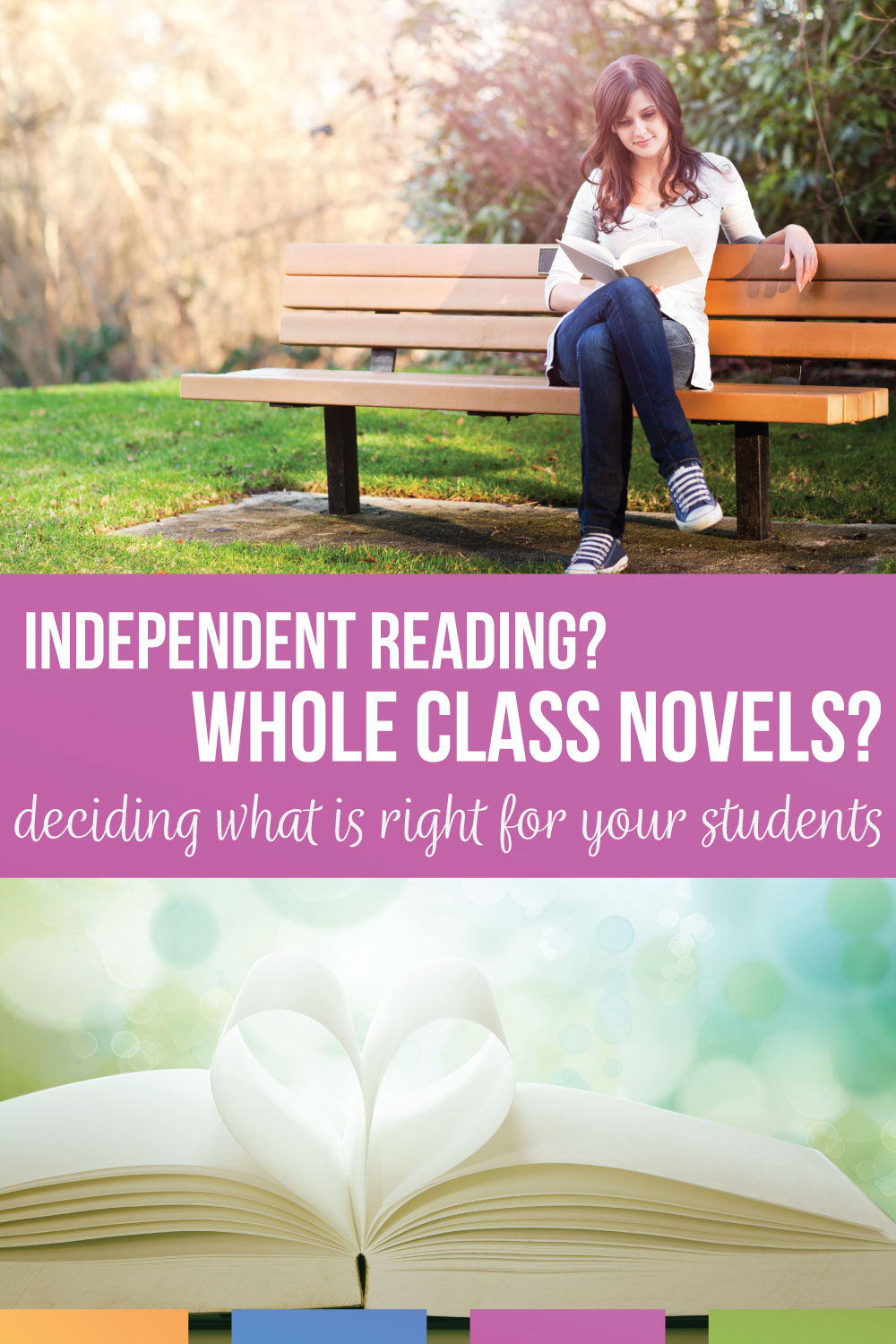
I am quite laid back with the independent reading and class novels debate because I find value in both. If you’re looking for another perspective, read what Melissa from Reading and Writing Haven suggests concerning independent reading and class novels.

